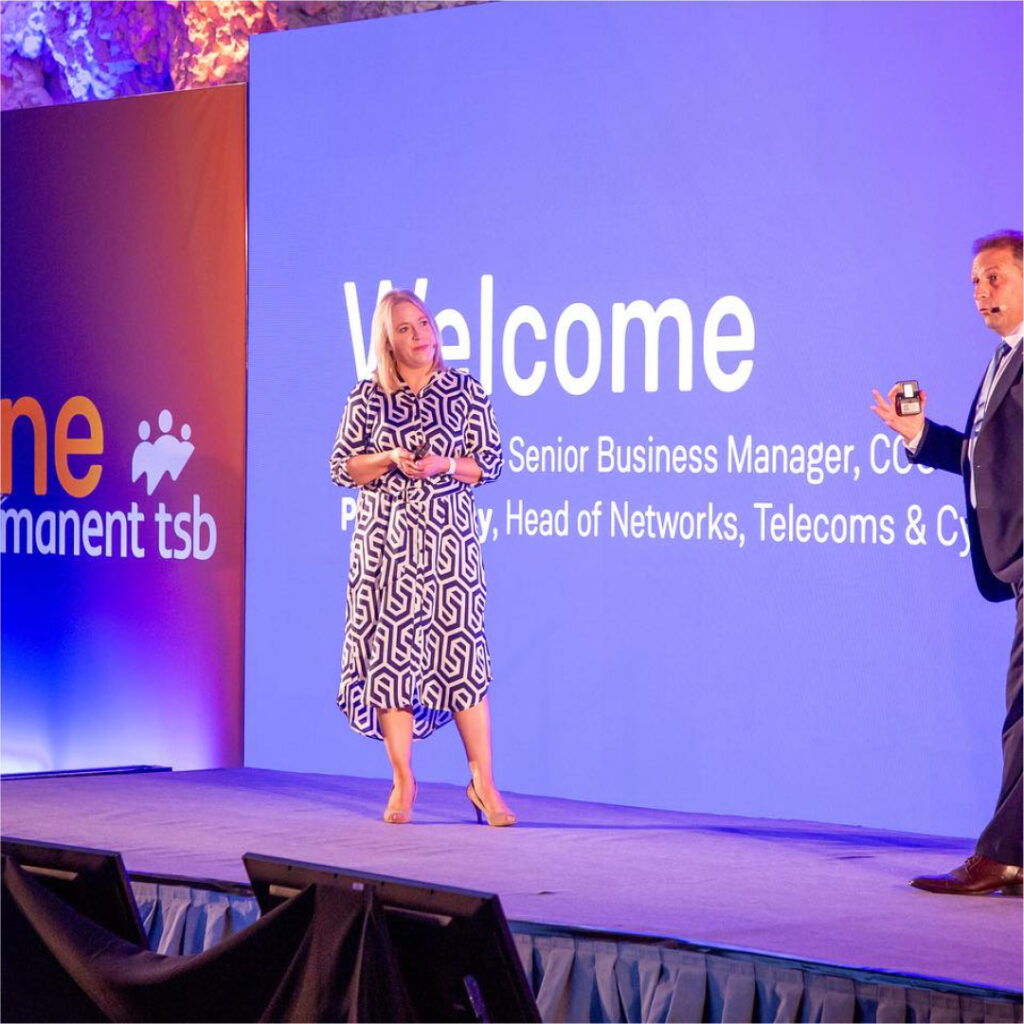Virtual events may be new to you as you grapple with shifting communication mediums but thankfully, they’re not new to us.
We’ve spent the last number of years (since Google Hangouts first launched at least) working on hybrid events – live streaming from one office to another, live streaming to online platforms to broaden our audience, recording live events and streaming them at a more suitable time for guests in other time zones. Back then, they were just called events the virtual element was important, but it was secondary to our main focus – the experience of the live attendees in the room.
Our focus has changed over the last couple of months (thanks coronavirus!), we have sadly said bye for now to the live event and hybrid event and are solely focusing on virtual/online events. We have switched our mindset of and approach to events to cater to the experience of one individual sitting in front of a screen in the comfort of their own homes. Naturally, this brings its challenges. The control you once had over your audience is diminished as the delegate juggles various interruptions – emails, text messages, the distractions of home life, family, roommates, pets, the door-bell, and the list goes on.
Here is a snippet of what we have learned so far:
Content Is King
When you’re watching Netflix, what is that keeps you so engaged that you happily let the next episode of The Last Dance play automatically? The good storyline and the need to know what happens next. Your online event doesn’t need to be the world’s most in-demand documentary but the reality is, sharing content directly to a single person via a computer screen is more akin to watching a tv show or a movie rather than sitting in a large auditorium with several hundred people facing a stage. Therefore, we need to learn from our favourite tv productions if we want to deliver amazing virtual events.
A virtual event should be filled with dynamic content to separate it from all the Zoom or Teams calls everyone is experiencing at the moment.
Mind the Firewall
Numerous platforms offer different mixes of tools and functionality and any number of them will work for your event so don’t get too hung up on this at the start of your planning. Once you know what you want attendees to take away from the event, the number of speakers/types of content you want to offer, it will be much easier to pick the platform.
One thing to keep in mind when you get to this stage in your planning is firewalls – those of your speakers and your attendees. The platform you choose needs to play nicely with firewalls so that all attendees can easily access the event and so that you don’t have to stream your speakers in using a different tool. Build-in some testing time early in the planning stage to iron out any of these kinks.
Time is more precious than ever
A typical half-day live event should translate to a 2 hour or so virtual event. Analytics show that the average engagement time of attendees online is 18 minutes – short enough to hold people’s attention and precise enough to be taken seriously. Dragging your event out to fit in areas of less interest or value will cause attendees to drop off. Start by looking at the agenda of a similar live event, remove the catering breaks, and scale back from there. Condensing the schedule down to ensure high-quality content will allow for maximum audience engagement.
Most platforms will allow you to record your events and we would recommend making use of this function. Something is bound to come up for some attendees, especially as we all try to live our lives from our homes. Recording the session and sharing it later will add real value for attendees who have to duck out halfway through or who have a real interest in one of the topics and would like to refer back to it at a later stage.
If the shoe doesn’t fit, don’t force it
Not all elements of your live event can be transferred seamlessly to a virtual version, and that is a good thing! While virtual events are here to stay in some shape or form, they will not replace a live event so it is important not to devalue your brand or event by promoting your virtual series as a replacement to it, or an upgrade. If we have learned anything through this pandemic, it is that we, as humans, need to connect with people in person.
Networking is one of the biggest attractions for some people at events and this is the hardest element to bring into the virtual event space. It can be done through chat functions or breakout rooms but it will not be the same and that is ok. Adding a gaming element to the event (where you can create an avatar, collect badges or rewards, etc) can increase attendee interactions somewhat but it is strong content that will ultimately enhance engagement.
Pre-Comms are a must
With everyone currently living life from behind their laptop, monitor or phone screen, communicating with attendees is even more important for many reasons – to remind them that they’ve signed up for the event, to differentiate that this event is not just another zoom call and to give them a sense of occasion. Research shows that online ‘countdown’ style content from the events social channel works to reaffirm why the attendee registered for the event and strengthens their commitment to attending.
While we are enjoying the shift in focus that virtual events allow us, we are itching to get back to our first love – live, in-person, events. That being said, we expect to move back to the realm of the hybrid event so that we can keep all of the great things we love about virtual events going after this pandemic has passed and as we get back to meeting people and delivering exceptional experiences, face to face.
Want to host your own virtual event but don’t know where to start? Drop us a line!






















